Where Do Wraith Prism Cooler Cables Connect in to
What you need to pursue on
- About amount of money of knowledge about computers, and their internals
- Around a calendar month to await for AliExpress cargo ships
- A pair of flat pliers, sooner phonograph needle-scent
- Optionally, a dupont crimping tool will help oneself
TL;DR
If you just wish to know what to grease one's palms, jump aheads to the last bit
The predicament
Months ago, my brother's PC died, and he got it "repaired" at a local shop (I was sledding to look at it only never got around to information technology).
^(Non to let my coarseness show, the shop's "repair" was retributive to replace all part in the case. On arrival, the Microcomputer still had intermittent hangs until I updated the BIOS, by which meter my brother had conferred ahead & bought a play laptop. I guess the upshot was that I got his now spare data processor, which I'm using as a waiter.)
The PC shipped with a Ryzen 7 with an AMD Wraith Optical prism cooler.
The RGB wasn't being detected by my system. The AMD Wraith Prism's RGBs have two options for control cables - I opened the casing prepared to work out which was in use. Turns out the guys that built it ne'er bothered connecting any, and they never provided the unused parts from the build 😡.
It probably serves me good for organism drop-off & not sounding at the computer myself/not building it myself, but, lessons learned I guess.
Replacement options
When I looked into sourcing a replacement, unsurprisingly, this very specific cable was non easy to find, and not specially cheap - In the order of $50 AUD.
Though at first sight, these connectors appear to be very specialized, and totally unusual to the product, I suspected that ultimately, IT tends to be cheaper, easier, and more convenient for manufacturers to use standard parts in their connectors.
If I can figure out what those are, I can build one of these myself.
Research
Matching the pins
You deman to be able to mates the lines on each side of the connective to ensure that the right pin on the board is connecting to the right pin on the peripheral (The RGB).
Acquiring this right is very important, since if we make a mistake, the potential drop consequences May admit:
- Shorting VBus to GND
- VBus is our +5V power supply, and GND is its complement.
- These two work in tandem to power many things in our computer
- If you put across something (/a load) between VBus & GND, the potential difference drives a current through the thing/load up.
- How "difficult" it is to mogul the load (The load's ohmic resistance/resistance) is what determines how overmuch current goes through the incumbrance.
- This is Ohm's Law:
-
current = potential dro / resistance.
-
- Cables are designed to be identical elementary to put over current through - They're just there to connect things to each other.
- In other lyric, cables have a rattling low resistance, near zero resistance.
- If we by chance connect VBus to GND, we undergo the following:
-
current = voltage / resistance. - as resistance approaches 0:
-
current = 5V / 0 -
live ~= eternity
-
- Eternity current is not something we neediness in our computer. Whatsoever part of your computer will begin to smoke, and now whichever partly that was is no more a functioning split.
We need to ensure we understand what line connects to what on to each one incline.
Matching the mannequin factor of the connector / plug / socket
You also need to cost able to match the physical plug itself along either go with.
The primary things you need to know if you want to match a connector to a picture are:
- The number of connections
- The dimensions of the housing
- The distance between each tholepin - AKA the "pitch"
The fundamental outcome of getting this wrongly is that you:
- Land up with a plug that just doesnt fit into a socket,
- Forbidden of pocket a few dollars, &A;
- Waiting another month for AliExpress to ship you the accurate parts
We also Father'T want to get this base - it's inconvenient.
Matching the connector
As explained, matching the pins on the peripheral to the pins on the board is very valuable to get right, as a error could be disasterous.
Matching the connector form factor is less important, American Samoa if you louse up, at to the lowest degree you don't break anything (ordinarily).
Fortunately, matching the pins was (in this instance) a fairly easy action. The form factor took more work.
Matching the pins
It's time to start searching for AMD Wraith Optical prism cable pictures- Trenchant this a while yielded this reddit post.
The post is a cry out for help in replacement one of their control cables - They're missing the 4 pin cable on the right, but they still have the 3 pin cable connected the left.
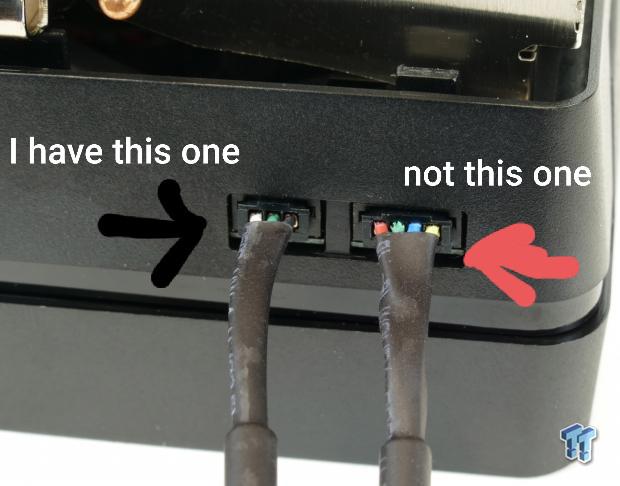
The cablegram on the left is the one we need to replace. This project is simple but conveys a good deal of information.
In particular, we can see 3 colours on the cable, white, green, and ignominious.
These colours are remarkable, As they are considerably documented in the USB2 modular, but to be safe, let's review some other post on the matter.
Reddit user OutrageousOkona asks: Found in my cable drawer, what's the smaller connection and what could it connect to a usb header? Thanks!
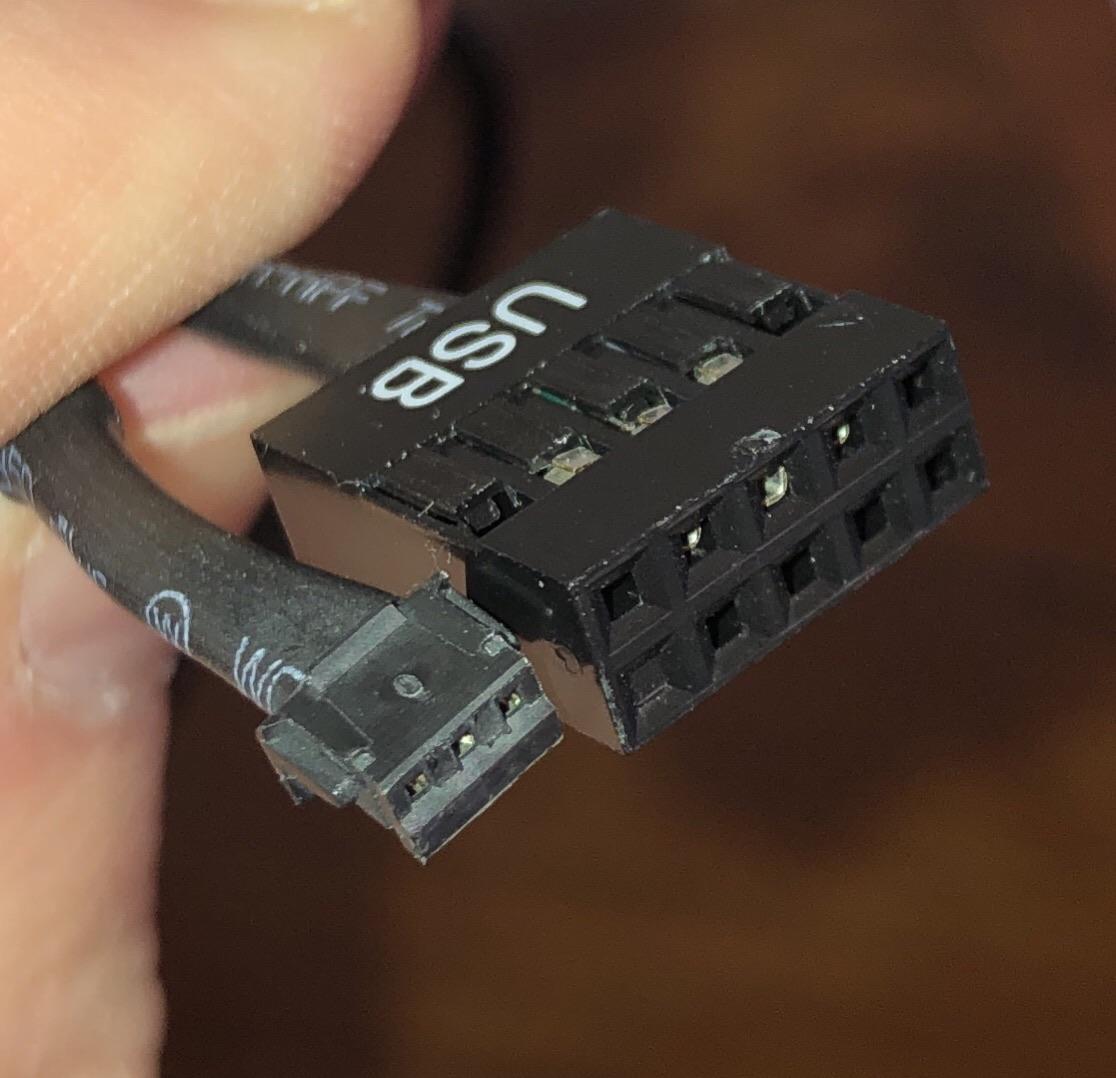
He gives us some excellent closeups (Which I volition usage for form factor), and commenters seem to mean information technology matches, though oddly enough, OP doesnt own an AMD Wraith Prism:
it looks like the connector for the AMD Wraith Prism Stock Cooler.
IT does rather, I don't own one though. Serves Maine right for non making a note of it ages ago.
Let's take note of the strange side, though. We can meet a 9 Pin USB2 female coping cable. Note of the colours on the 9 pin connexion- We can see green is just visual for the middle socket.
It's hard to say for trustworthy, simply it too looks like white might be panoptic for the rightmost connection.
Is there any way to verify this configuration? Well, fortunately this is fine documented as a convention in the USB2 criterial - frontx.com agrees

We now consume enough info to comfortably know what line connects to what on from each one slope, and as tall as we align our connector correctly, we're most of the way in that location.
Co-ordinated the form factor out
Now is the harder part - determining the manikin factor of the unknown connecter.
The number of pins is trivial - The rest is not.
Dishonest starts
Alas, OP's estimates for the width of their connector were remove by enough that the conclusions drawn from them were all incorrect.
In the above post, OutrageousOkona was accommodating enough to prove an album with multiple, bully quality pictures of the part - as well as a rough measure for the 3-pin side connector:
IT's just over 4mm wide if that helps.
Estimating the width to live ~4.10mm, I couch the picture into GIMP & assembled some measurement annotations -
I explain how to brawl this in How to annotate any image with accurate dimensions using escaped, wide-source GIMP.


From this, I got a pitch of around 1.05mm - This is on the littler end for this kind of connector, but, from baffle-checking with the JST Product Overview, this appeared to be a reasonable match for the JST SR/SZ

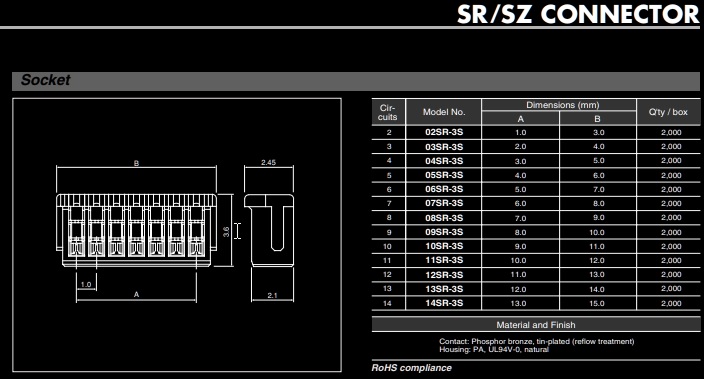
Rightmost later I ordered a set of these, I got a respond on my own request for Sir Thomas More information:
The image shared had a really clear reference for dimensions, & very clearly indicated that my original reference was fashio off.
Genuine Dimensions:
MenryNosk Comments:
yeah yeah, my phone's camera suck 🙄

Is this what you wanted?
Following the steps described in my other post, I got the following:
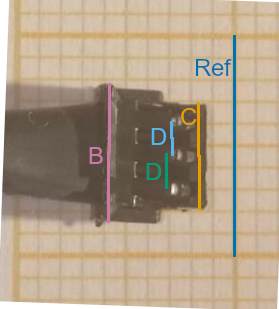
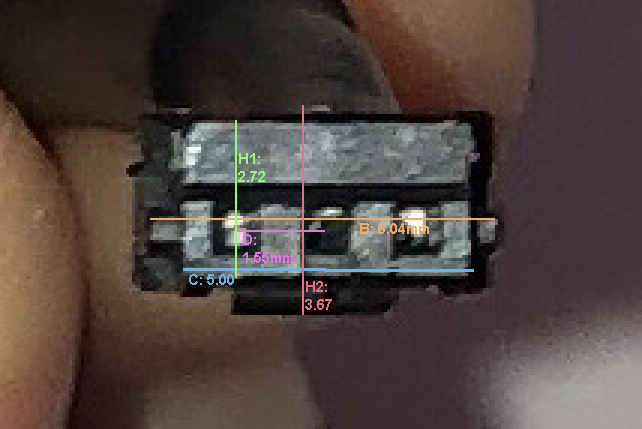
Where:
-
Ref=10.00mm -
B≈6.04mm -
C≈4.9mm -
D≈1.5mm
Comparison this to the product entry for the JST-ZH3, we see

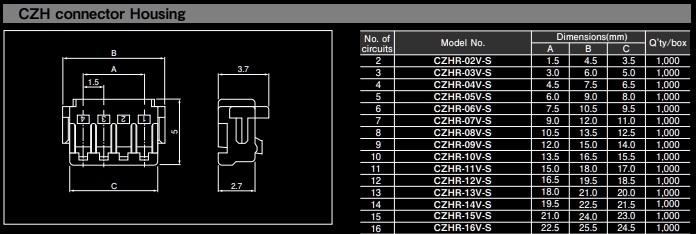
Looks like we have a peer!
Building the new connection
Now we need to buy stuff, and make a other connection.
On the motherboard, the corresponding USB2 lintel has 9 pins, with a regulation pitch of 2.54mm (1/10 inch)

In essence, any female 2.54mm dupont coping can connect to the motherboard's USB header, and all we need to make this put to work is:
Buying the parts
The Cables
Ii cables:
- AMD Wraith
(JST-3ZH-1.5)->Female Dupont- This volition plug into the next cable television, which we'Ra using American Samoa an "extension" cable
-
Male Dupont -> Pistillate Dupont, "extension" cable- This extends the first cable length, and plugs into the MoBo's USB2 header
The reason for using the "extension" cable television service is that the precrimped JST connectors tend to have fairly short leads, so likely won't reach a USB2 header. If your JST connector wires are long enough to reach, then you might not need the extension cable system.

The CPU cable
- A precrimped
JST-3ZH-1.5mmconnector (This is sold-out as the quid, with the 3 wires already crimped & dangling. We'll let to crimp the loose ends into connectors) - Dupont Connective parts:
- A set of single row 2.54mm dupont shells (With 4 connectors)
- A roll of female dupont fatal pins (These usually sell in a swan of at to the lowest degree 50) The cheapest &A; easiest option is to buy a kit, so much as this combined from AliExpress
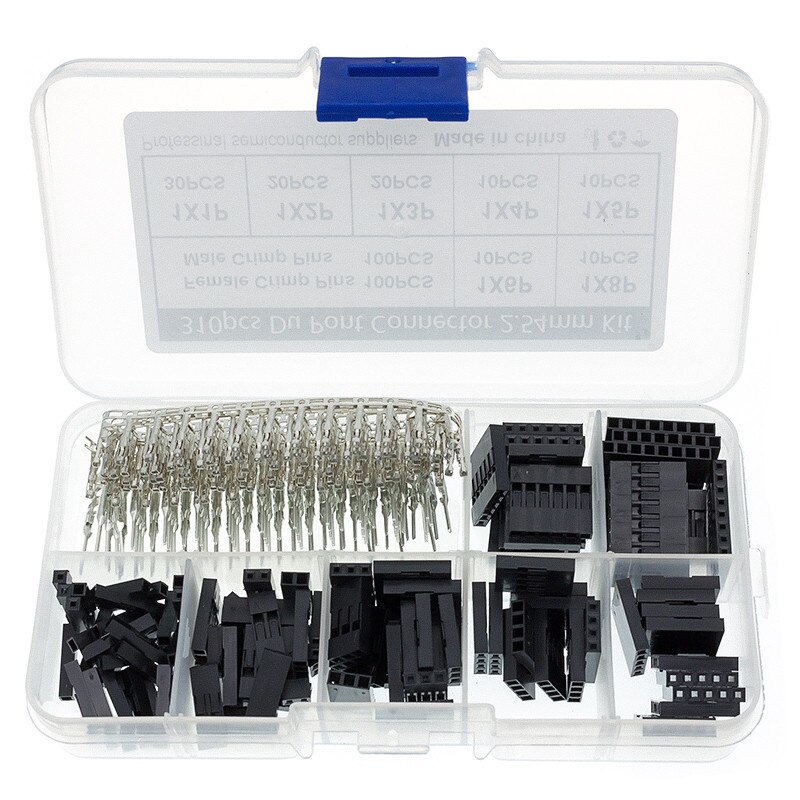
The "extension" cable
There are a couple of options here:
- ✔ Buy generic 4-pin male -> female dupont set
- Buy generic jumpers & crimp your own dupont cables using the outfit you already bought
- ❌ Buy a specific USB denotation cable length (Is colour coded, but can be a snatch more expensive)
Option 1 is the easiest.
Certain AliExpress stores will be given to have every part necessary - For lesson NZXIN Store
Example Shopping Handcart
- Processor Cable:
- 3-Pin JST-ZH-1.5MM, whatsoever distance (if long-lasting enough may not pauperism extension)
- Female Dupont Pins
- 4-Pin Dupont Shell
- Extension Cable:
- 4-Pin M->F Dupont Connector, 30cm
Aggregation the parts
CPU Cable
We can start by crimping the loose ends of the CPU Cable.
These put on't incline to have much exposed wire, so you may need to strip it a bit Thomas More. If you feature a dupont crimping tool, then you should use that, but this crimper can be cooked pretty well with some flatcar pliers. Dan Murphy's Youtube Tutorial demonstrates this.
It's large that we right friction match our pins, the next image demonstrates how

As you give the sack see, there's an redundant socket in our dupont connector that's non connected to anything- that's the 5V baron add line.
USB2 Alliance
Right away, we can plug this into our extension cable, or directly into the USB2 header.
We have to look to align this right with the header.
The header has ii rows of USB pins:
- one and only row has 4 pins:
-
MISSING,GND,D+,D-,+5V
-
- one row has 5 pins:
-
S-GND,D+,D-,+5v
-
We tin tell the alignment by the box with the missing tholepin:
Memory that on our cable, the +5V PIN number is disconnected We have to array it so that the +5V pin goes to the opposite corner from the missing rowlock.
The following images demonstrate this:

 Color Coded Extension Cord
Color Coded Extension Cord
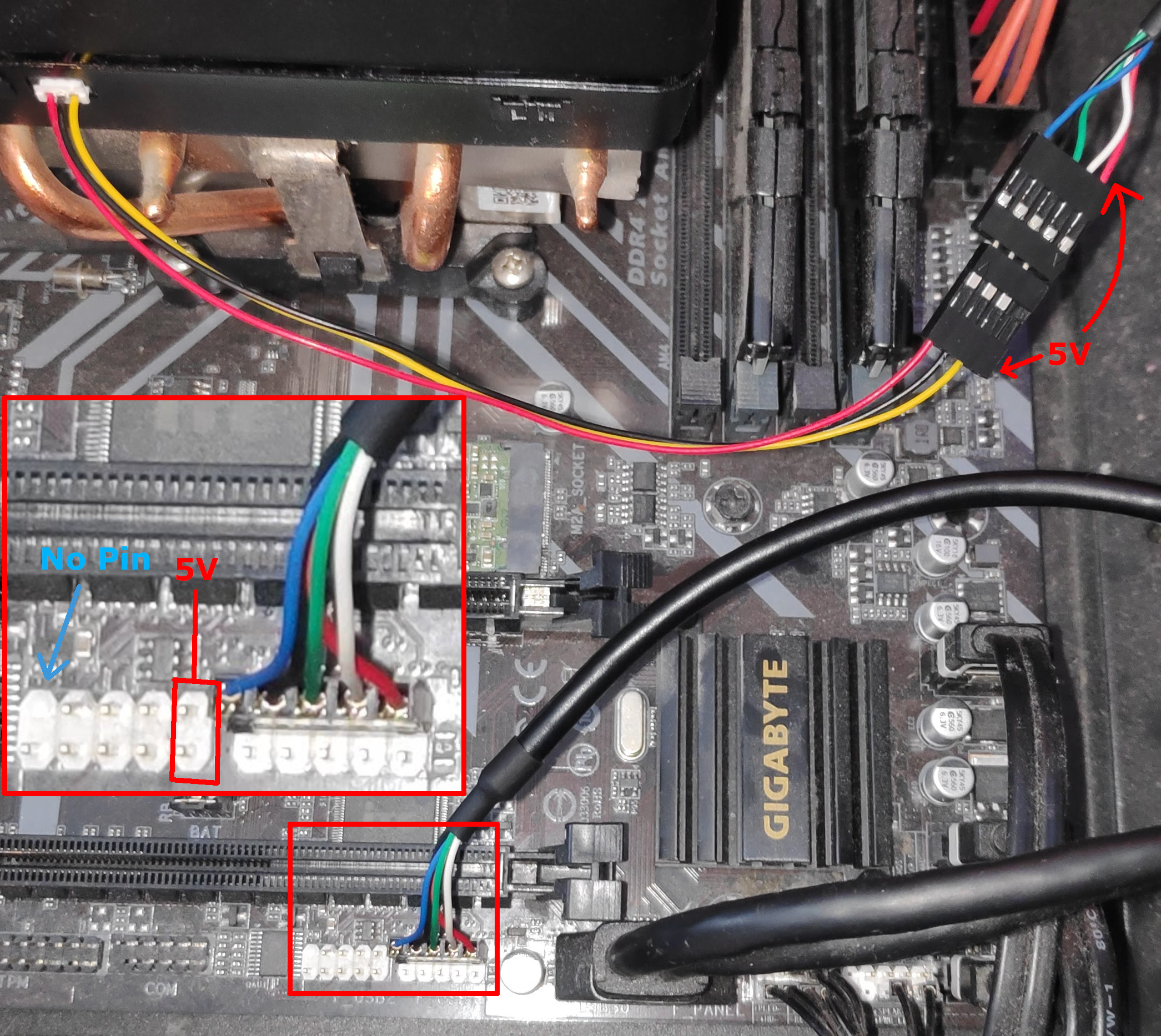
Where Do Wraith Prism Cooler Cables Connect in to
Source: https://straz.to/2021-04-17-replacing-amd-wraith-cable/
0 Response to "Where Do Wraith Prism Cooler Cables Connect in to"
Post a Comment